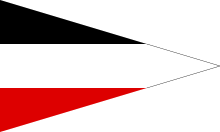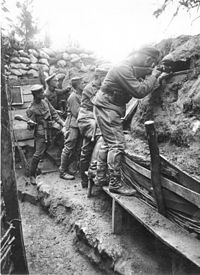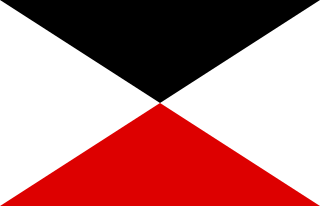
The IV Army Corps / IV AK was a corps level command of the Prussian and then the Imperial German Armies from the 19th Century to World War I.
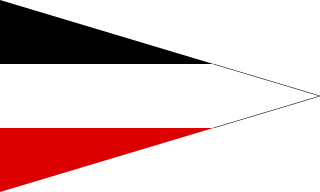
The Guards Cavalry Division (Garde-Kavallerie-Division) was a unit of the Prussian Army that was stationed in Berlin. The division was a part of the Guards Corps (Gardekorps).

The XX Army Corps / XX AK was a corps level command of the German Army before and during World War I.
The Bavarian Ersatz Division was a Bavarian division of the Imperial German Army in World War I. It was formed in August 1914 and dissolved on 6 October 1918. It was initially a Bavarian formation but soon received several non-Bavarian units which served with the division until 1917.

The XII Army Corps / XII AK was a Saxon corps level command of the Saxon and German Armies before and during World War I.
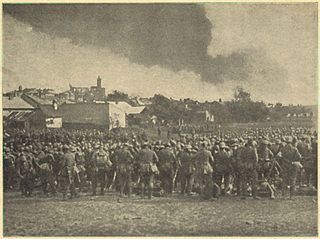
The 3rd Landwehr Division was an infantry division of the Imperial German Army during World War I. It was formed on the mobilization of the German Army in August 1914 under the "Higher Landwehr Commander 3". The Landwehr was the third category of the German Army, after the regular Army and the reserves. Thus Landwehr divisions were made up of older soldiers who had passed from the reserves, and were intended primarily for occupation and security duties rather than heavy combat. While the division was a Landwehr formation, at the beginning of the war it also had an attached Ersatz infantry brigade, made up of cadres from various regimental replacement battalions. The division was primarily raised in the Prussian provinces of Posen, Lower Silesia, and West Prussia. The division was disbanded in 1919 during the demobilization of the German Army after World War I.
The 87th Infantry Division was a formation of the Imperial German Army in World War I. The division was formed in February 1915 as the provisional Dickhuth Corps, named after its commander, and became the 87th Infantry Division in August 1915. The division was disbanded in 1919 during the demobilization of the German Army after World War I.
The 89th Infantry Division was a formation of the Imperial German Army in World War I. The division was formed in November 1914 as the provisional Westernhagen Division, named after its commander. The nucleus of the unit was troops collected at Posen. It became the 89th Infantry Division in August 1915. The division was disbanded in 1919 during the demobilization of the German Army after World War I.

The 1st Cavalry Division was a unit of the German Army in World War I. The division was formed on the mobilization of the German Army in August 1914. The division was disbanded in 1919 during the demobilization of the German Army after World War I.

The 2nd Cavalry Division was a unit of the German Army in World War I. The division was formed on the mobilization of the German Army in August 1914. The division was disbanded in 1919 during the demobilization of the German Army after World War I.

The 5th Cavalry Division was a unit of the German Army in World War I. The division was formed on the mobilization of the German Army in August 1914. The division was dissolved in February 1918.

The 8th Cavalry Division was a unit of the German Army in World War I. The division was formed on the mobilization of the German Army in August 1914. The division was dissolved in April 1918. The majority of the division was drawn from the Kingdom of Saxony.

The 9th Cavalry Division was a unit of the German Army in World War I. The division was formed on the mobilization of the German Army in August 1914. The division was dissolved in March 1918.

The Bavarian Cavalry Division was a unit of the Royal Bavarian Army, part of the German Army, in World War I. The division was formed on the mobilization of the German Army in August 1914. The division was disbanded in 1919, during the demobilization of the German Army after World War I. The division was raised and recruited in Bavaria.

The 7th Cavalry Division was a unit of the German Army in World War I. The division was formed on the mobilization of the German Army in August 1914. The division was disbanded in 1919 during the demobilization of the German Army after World War I.

The 6th Cavalry Division was a unit of the German Army that fought on Eastern and Western Fronts during World War I. The division was formed on the mobilization of the German Army in August 1914 and was disbanded in 1919 during the demobilization of the German Army after World War I.
The history of the German Cavalry in World War I is one of an arm in decline.

The II Cavalry Corps was a formation of the German Army in the First World War. The corps was formed on mobilization of the German Army in August 1914 and dissolved 23 January 1915 as the onset of trench warfare in the west negated the requirement for large cavalry formations. It was commanded throughout its existence by General der Kavallerie Georg von der Marwitz.

The North Army was an army level command of the German Army that existed briefly at the outbreak of World War I.

The Landwehr Corps was a corps level command of the German Army in World War I.
